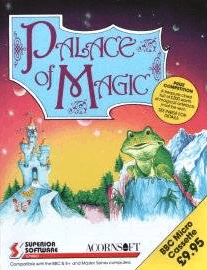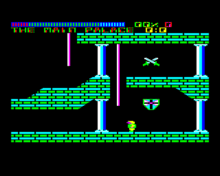Palace of Magic
| Palace of Magic | |
|---|---|
 Cover art | |
| Developer(s) | Superior Software |
| Publisher(s) | Superior Software |
| Platform(s) | Acorn Electron BBC Micro |
| Release date(s) |
|
| Genre(s) | Platform |
| Mode(s) | Single-player |
Palace of Magic is a computer game released in 1987 for the Acorn Electron and BBC Micro by Superior Software. Combining platform elements with problem solving, it uses extremely similar gameplay principles to that of the earlier and better known game, Citadel.

The game begins with your character in a palace, having been shrunk and taken out of your normal place and time by an evil wizard called Caldeti (an anagram of Citadel). The overall objective is to magically restore your character to their original size and to find the teleporter to their home world. This involves guiding your character through the Palace and other external locations, such as a church, woods and a dungeon, overcoming various obstacles and enemies along the way.
Similarities to Citadel
The player is not automatically killed if they come into contact with hazards; instead the player is allocated a set amount of energy (but this time measured by a bar, subdivided into units), which is depleted through contact, and can be replenished by collecting objects shaped like top hats. As in Citadel, the game is divided into 'rooms' or screens and if the player loses too much energy in a room, the screen turns red and the player is transported back to where they entered the room. This prevents players from passing through a room simply by walking through enemies and taking the damage.
Other similarities to Citadel include:
- Some areas of the game are not immediately accessible, but are blocked by coloured doors. In order to gain access the player needs to find a key with the same colour.
- Various objects are scattered throughout the game which must be collected to overcome obstacles and hazards.
- The location of a particular screen is provided by (x,y) co-ordinates, with (0,0) being the starting screen of the game.
- The player sprite is not superimposed over objects that it walks "in front" of; rather, the colour of the pixels of the character sprite is overlaid, using an XOR bitwise operation, with the colour of the superimposed object, resulting in a completely different colour.
References
| ||||||||||||||||||||||||||||||||||||||||||||||||||||||||